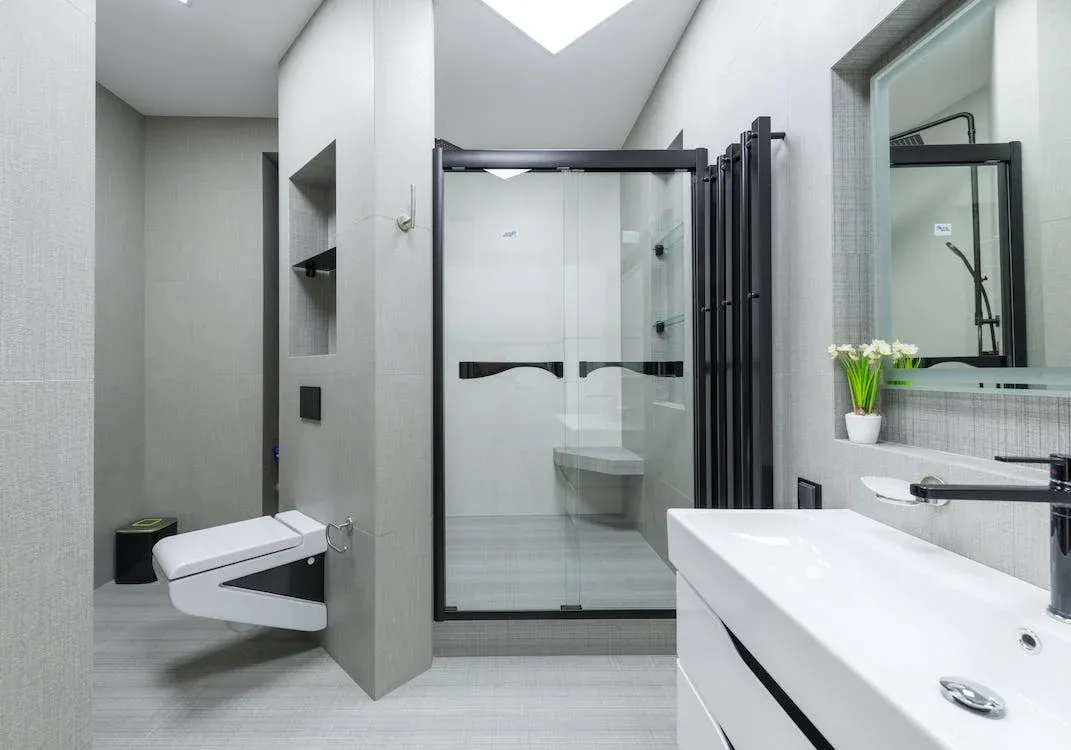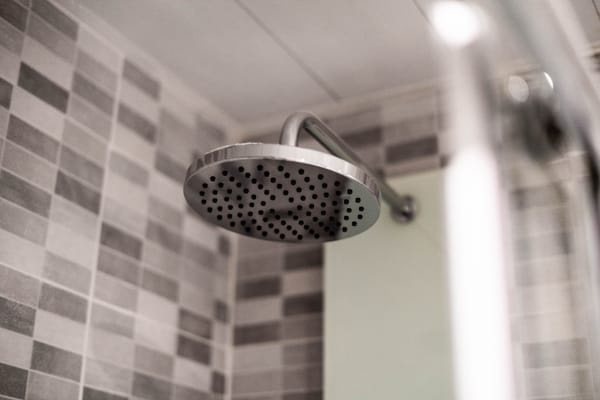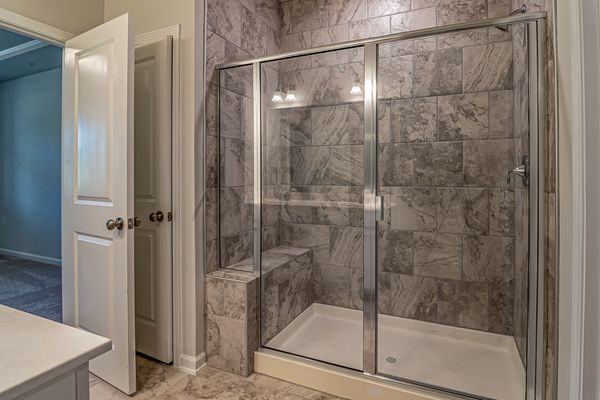A shower bench is a valuable addition to any bathroom, providing comfort, convenience, and safety for those who need it. Selecting the right shower bench height is crucial to ensuring a comfortable and secure bathing experience.
In this comprehensive guide, we'll discuss the various factors to consider when determining the ideal shower bench height, including ADA guidelines, user height, and other ergonomic considerations. Let's dive in!
Shower Bench Dimensions
Shower Walls
Sit comfortably as we discuss the basic information on the right shower bench dimensions, shower seat, and other aspects of your walk-in shower.
ADA Guidelines for Shower Bench Height
The Americans with Disabilities Act (ADA) sets guidelines for shower bench heights to ensure accessibility and safety for individuals with disabilities. According to ADA standards, a shower bench should be between 17 and 19 inches (43 and 48 cm) above the shower floor. This height range accommodates most users and allows for easy transfers from wheelchairs or other mobility aids.
However, it's essential to note that ADA guidelines may not be suitable for every individual, as personal preferences and needs may vary. Therefore, it's crucial to assess the user's specific requirements when determining the ideal shower bench height.
User Height and Comfort
While ADA guidelines provide a general height range for shower benches, it's important to consider the user's height for maximum comfort. As a rule of thumb, the shower bench should be at a height that allows the user's feet to rest flat on the floor while seated, with their knees bent at a comfortable angle.
To find the ideal shower bench height based on the user's height, follow these simple steps:
- Measure the user's lower leg length (from the heel to the back of the knee).
- Subtract an inch or two to account for the thickness of the shower floor and any cushioning on the bench.
- Use this measurement as a starting point for determining the appropriate shower bench height.
Remember, individual preferences may vary, so it's always best to consult with the user to ensure the height is comfortable and convenient for them.
Ergonomic Considerations
In addition to height, other ergonomic factors can significantly impact the user's comfort and safety while using a shower bench. Here are some essential features to consider when choosing a shower bench:
Backrest
A backrest provides added support and comfort while seated. Look for a bench with an adjustable backrest to accommodate users of different heights and preferences.
Armrests
Armrests can assist with transfers and provide additional support while seated. However, make sure they don't obstruct transfers or create a tripping hazard.
Non-slip surface
A non-slip surface on the bench can help prevent accidents and provide a secure seating area. Choose a bench with a textured surface or non-slip padding for added safety.
Drainage holes
Proper drainage is crucial to preventing the build-up of water and bacteria. Opt for a shower bench with drainage holes to ensure a clean and hygienic seating area.
Material
Shower benches can be made from various materials, including wood, plastic, and metal. Consider the user's preferences and the bathroom's aesthetic when selecting the right material.
Installation and Adjustability
When installing a shower bench, it's essential to ensure the bench is securely fastened to the wall or floor to prevent accidents. Consult with a professional installer to guarantee a safe and sturdy installation.
Many shower benches are adjustable, allowing users to modify the height to suit their individual needs. If multiple people will be using the bench, consider investing in an adjustable model to accommodate everyone's preferences.
Frequently Asked Questions
Built-In Shower Bench
1. What is the standard shower bench size?
The standard shower bench size varies depending on the user's needs and the available space in the shower. However, a typical bench measures approximately 20-24 inches (50-60 cm) in width and 12-16 inches (30-40 cm) in depth.
2. Can a shower bench be installed in an existing shower?
Yes, a shower bench can be installed in an existing shower. There are various types of shower benches, including wall-mounted, freestanding, and built-in models, which can be added to an existing shower space. Consult with a professional installer to determine the best option for your bathroom.
3. How do I clean and maintain my shower bench?
Regular cleaning and maintenance are essential to prolonging the life of your shower bench and maintaining a hygienic environment. Clean your shower bench with mild soap and water, and use a soft brush or cloth to remove any dirt or grime. Make sure to rinse the bench thoroughly and allow it to dry completely. Periodically inspect the bench for signs of wear or damage, and address any issues promptly.
4. Are there weight limits for shower benches?
Yes, shower benches typically have a weight limit, which can range from 250 to 500 pounds (113 to 227 kg) or more, depending on the model and materials used. Always check the manufacturer's specifications to ensure the bench can safely support the user's weight.
5. Can a shower bench be used as a bathtub transfer bench?
A shower bench can sometimes be used as a bathtub transfer bench. However, it's crucial to ensure that the bench is stable and secure when positioned over the bathtub's edge. It may be safer to invest in a dedicated bathtub transfer bench designed explicitly for this purpose.
Other Things to Consider
It's essential to understand that each shower space is unique. Whether you're considering a corner shower bench, a folding shower bench adjacent to the shower wall, or navigating the myriad of shower bench sizes available, it's pivotal to select a bench that complements the ergonomics of your bathroom.
Corner shower benches, floating shower benches, and even freestanding shower benches each come with their unique footprint, adding utility and style to your shower stall. Still, the built-in bench remains a classic choice for many.
It becomes evident that the best shower bench size for your space might not fit the typical mold. The right shower bench dimensions guide will tell you that while there's a minimum width to ensure comfort, the perfect height for your shower bench depends on personal preference and the layout of your shower stall.
Built-in shower benches often offer a streamlined look, while corner benches can maximize space. Regardless of your choice, always prioritize comfort, safety, and aesthetics to get the best out of your shower experience.
Conclusion
Shower Bench Depth
Choosing the right shower bench height is vital to ensuring a comfortable and safe bathing experience for users. By following ADA guidelines, considering the user's height, and paying attention to ergonomic factors, you can select the ideal shower bench height that suits everyone's needs. Additionally, installing an adjustable shower bench can provide flexibility and convenience for multiple users or changing requirements over time.
Shower Bench Width
Now that you have a thorough understanding of shower bench height, you're ready to enhance your bathroom with a comfortable and safe seating option. With the right shower bench, you can transform your daily shower routine into a relaxing and enjoyable experience for yourself or your loved ones.






